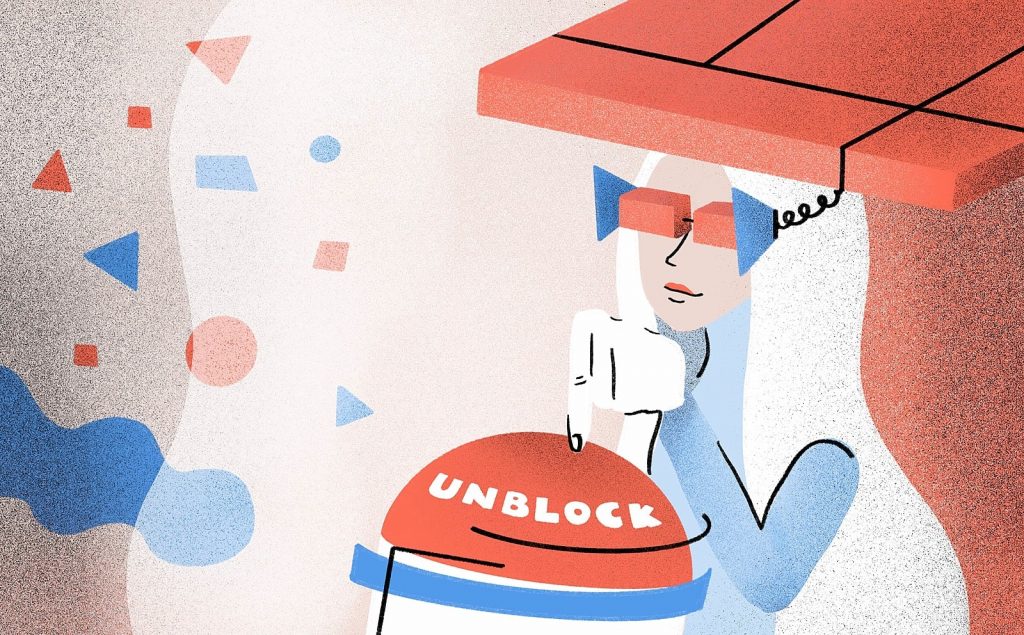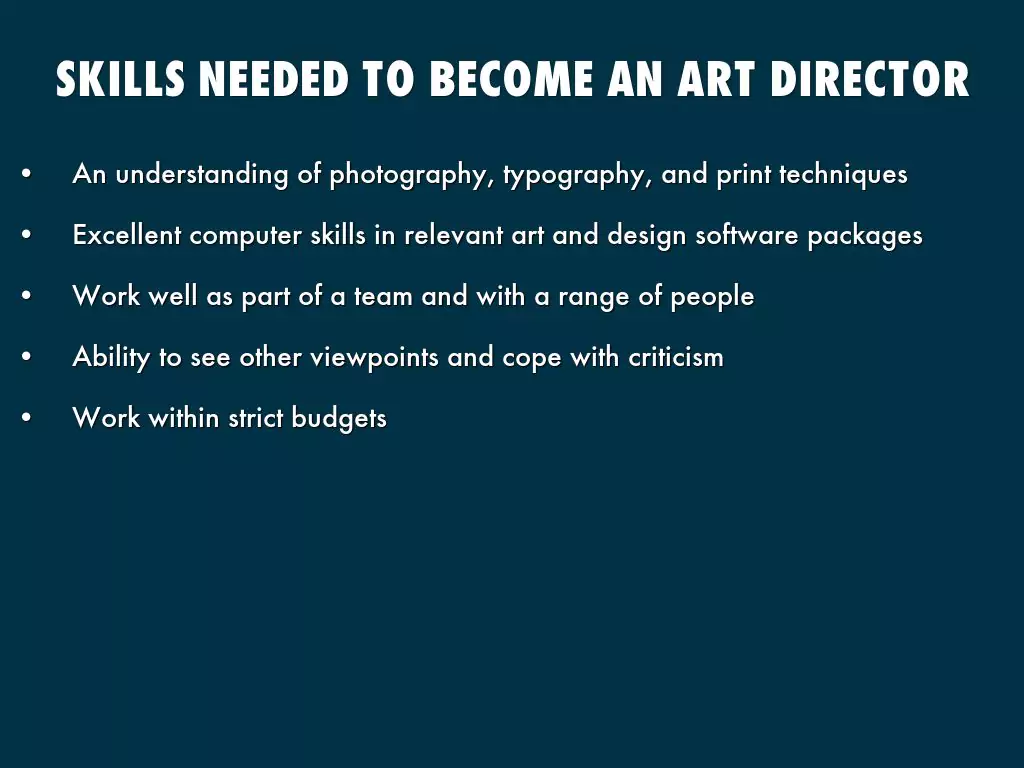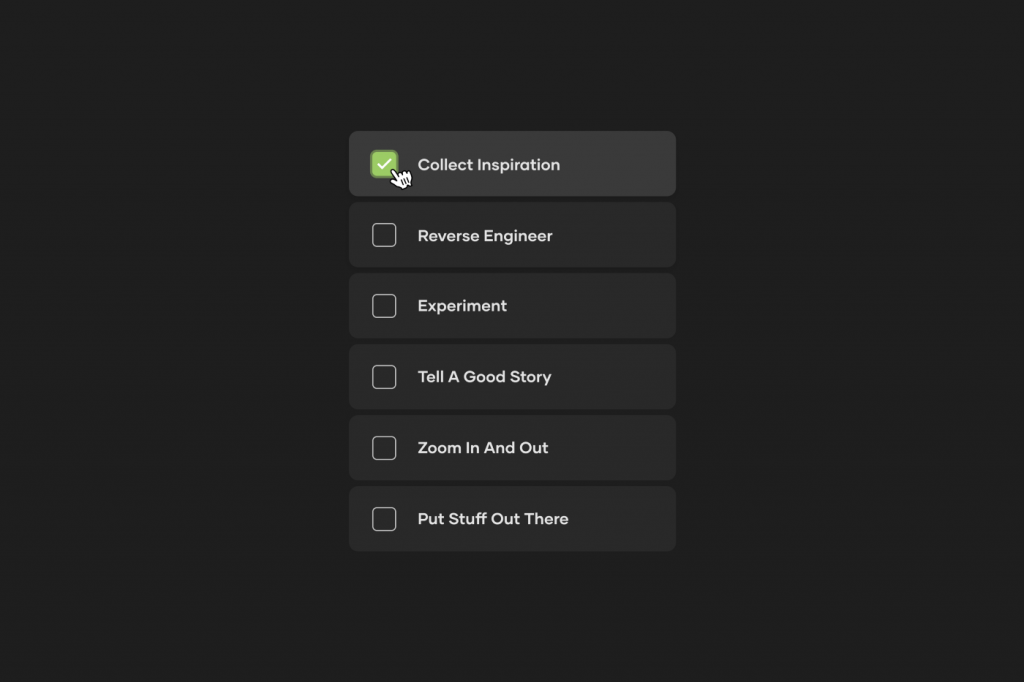How to Become a Creative Person
Creativity can seem mysterious—an elusive skill that some are born with and others not. But the truth is, creativity is a skill that anyone can develop with the right mindset and tools. Contrary to popular belief, creativity doesn’t just refer to pursuits like painting, writing, or music. It’s a way of approaching challenges and opportunities that allows you to generate novel solutions and ideas.
Creativity enables you to find connections between seemingly unrelated concepts, shift your perspective to uncover hidden possibilities and combine old ideas in new ways. It’s an invaluable asset in work and life. Creativity is highly sought in nearly every field in today's innovation-driven economy. But how exactly do you become a more creative person? Let’s dig in.
Table of Contents
Develop the Mindset of a Creative Person

Cultivating creativity starts from within. Adopting highly creative people's mindsets and core beliefs lays the mental groundwork for innovative thinking. Here are some key elements to embody:
Curiosity and Open-Mindedness
You must first gather a breadth of information and perspectives to generate new ideas and solutions. Creative people have an insatiable curiosity about the world around them—they read widely across diverse topics, pose thoughtful questions, and eagerly engage with different types of thinkers. Genuine interest and open-mindedness allow you to connect the dots between disparate concepts that could spark unexpected solutions.
As you gather information, avoid jumping to conclusions or harshly criticising fresh ideas before exploring them. Creative thinkers consider every perspective with the same initial openness—they understand that sometimes the most innovative solutions can seem the strangest or most counterintuitive at first.
Perseverance Through Failure
Not every creative endeavour works perfectly the first time—and that’s okay. Creativity inherently involves a lot of failure and dead ends. Creative people view failure as a natural and expected element of the process, not a reflection of their worth or ability. This frees them to take risks, embrace bold possibilities, and not lose motivation when attempts fizzle.
With each setback, creative thinkers reflect on what they can learn before moving forward. Through determination, bits of progress accumulate into something more significant. Marvel’s Stan Lee famously encountered years of rejection before reaching mass comic success—he relied on perseverance and learning through many failures. When you hit roadblocks in your creative pursuits, adopt the perspective that each “failure” brings you one step closer to an eventual breakthrough.
Flexible Thinking
Creative solutions rarely take a straight path, often requiring indirect, flexible approaches. Highly creative thinkers have mastered flexible mindsets that allow them to shift seamlessly between different ideas, mental models, and conceptual frameworks. They generate connections between concepts that initially seem unrelated.
Cognitive flexibility lets you shift your approach or viewpoint to gain new insights. For example, when pondering an issue from just one angle proves difficult, take a step back and reframe the situation from a fresh perspective. This ability to switch lenses and forge indirect connections yields those sought-after “aha” moments of genius. Flexible thinking means staying agile and open to whatever direction a creative effort takes you—even if it deviates far from the expected path.
Intrinsic Motivation and Grit
What drives highly creative people? More than a desire for money, status, or recognition, creative individuals are fueled foremost by intrinsic motivation rooted in their passion. They have a bone-deep interest in the endeavours that light them up, dedication to mastering their creative craft, and grit to see efforts through over the long haul. Positive feedback and financial gain might come later, but what keeps creative people going through the inevitable difficult stretches is sheer love for what they do.
To boost your creative motivation, connect with what you find fascinating at your core—the challenges and opportunities that get your heart and mind racing. Orient your efforts towards that intrinsic passion as much as possible. Financial and external rewards, while nice, should feel secondary to the sheer joy and curiosity propelling your work. Tapping into intrinsic drive gives you the stamina to endure the failures and rejections essential to creative success.
Gather Rich and Varied Life Experiences

Creative thinkers often share another trait—rich and eclectic life experiences that expose them to diverse cultures, thinkers, and realms of knowledge. Such breadth provides invaluable raw material, forging new connections between concepts and ideas. Creators often subconsciously draw from this well of experiences to yield fresh solutions.
So, a pivotal step to boosting creativity involves deliberately cultivating rich and varied life experiences through the books you read, types of entertainment you consume, people you befriend, career paths you follow, places you visit, and activities you try. Here are some starting points for gathering life experience fodder:
Travel Often and Off the Beaten Path
Visiting different cultures opens your eyes to entirely new ways of living, social customs, foods, artistic traditions, values systems, and solutions crafted in response to local challenges. The cognitive dissonance generated when immersed in radically different environments also jolts you out of stale thinking patterns back home.
While a two-week European tour checks the travel box, creative people tend to gravitate towards more exotic, off-the-radar adventures that provide raw glimpses into the human experience. Backpacking through remote villages, living with indigenous communities, or traversing lesser-known corners of the globe can prove particularly eye-opening.
Befriend People From Diverse Walks of Life
Your social circle also hugely impacts the ideas and information you’re exposed to. Most people unconsciously tend to befriend those similar to themselves—with comparable backgrounds, education levels, political views, cultural tastes, and life experiences. Counteract this by deliberately seeking friendships with those from entirely different walks of life than your own.
Reach out to the quiet wallflower, a foreign-born classmate, a colleague from a different department, or a community elder. You get the gist. Ask thoughtful questions and listen intently to understand fresh perspectives; some connections will blossom into enlightening friendships over time. The more diverse the glimpses into humanity you gather this way, the richer the raw creative material you accumulate.
Diversify Your Media Diet
In your media intake, like books, podcasts, videos and music, shake up your diet by mixing genres and topics you know little about. For example, pick up an acclaimed manga graphic novel even if you’ve never read that style before or try listening to an economics podcast even if finance bores you. Deliberately varying information sources expose you to new ideas, narratives, concepts, and communication mediums. Pieces of this input might one day snap together in your mind to yield creative new combinations.
Don’t just passively consume either—keep an open-minded, curious attitude as you digest new media. Notice emotional responses triggered, assumptions surfaced, and connections forged to other ideas. Consciously absorbing diverse information and perspectives is critical.
Master Key Creative Skills

Specific teachable skills form the essential toolbox enabling practical, creative thinking and problem-solving. Developing competency in these core areas empowers you to unlock creativity on demand whenever inspiration is needed.
Boost Your Observational Skills
Creative genius often starts with attentive, discerning observation that brings subtleties and gaps into focus. Learn to observe more intentionally using all your senses and register overt details and finer nuances. For example, beyond just “noticing a tree,” concentrate on the rustling sound its leaves make, the exact bark texture, and the play of light and shadows on branches.
Build sensory memory to draw on later when seeking creative solutions—the richer your mental catalogue of observational “raw material,” the more diverse combinations you can piece together. Keep a pocket notebook on hand to jot notes and sketch compelling sights.
Improve Visualisation Abilities
Top creatives excel at clearly visualising ideas, designs, mental models and finished products in their mind’s eye—long before painful implementation. Strengthening visualisation capacities through deliberate practice allows you to experiment with more mental prototypes efficiently. Test out colour schemes, editing tweaks, UX flows, accessory pairings, etc., internally before external creation.
Pinpoint solutions manifest more easily when you clearly understand desired outcomes, almost tangibly feeling, tasting or hearing them. Athletes rely on visualisation when mastering physical feats—see creative efforts as equally demanding mental gymnastics to condition. Use visual cues, synonym replacements, and metaphors to make concepts pop into your imagination.
Enhance Verbal Dexterity
Language mastery expands your capacity to articulate embryonic sparks and half-formed ideas into crystallised expressions that others understand. Many brilliant concepts lurk partly developed in most minds—creatives distinguish themselves by eloquently conveying even fuzzy notions using analogy, metaphor, crisp explanation and vivid descriptive language.
Reading literary fiction analytically, freestyle journal writing, debating skills, improv and toastmasters-type groups all sharpen this core competency over time. Expand your active vocabulary through services like Vocabulary.com—wielding more exact, nuanced words amplifies idea communication precision.
Improve Writing Ability
Whether crafting a screenplay, penning poetry, developing a video game, or communicating vision to a team—strong writing chops enable creatives to bring half-formed notions to life. Writing also supports idea incubation, helping vague thoughts coalesce into coherent expressions.
Practise various formats like freeform journaling, structured outlines, screenplays, short stories and poems—each stretches your ability to structure narratives, express emotions and bring scenes to life using only words. Read abundantly within the genres you write and analyse why compelling examples resonate. Aim to convey complexity using only lean, poignant prose.
Cultivate Design Thinking Skills
Design thinking approaches problem-solving with creative user needs firmly in mind—a pivotal skill for fields like product design, UX and marketing. However, this human-centric process can catalyse innovation across disciplines. At its heart, design thinking is about:
- Deeply understanding an audience’s wants, frustrations and behaviour
- Framing opportunities from their vantage point
- Rapidly ideating solutions that deliver emotional resonance
- Iterating based on honest user feedback
Take online courses to learn frameworks like Stanford’s five-stage design thinking model, then practise applying them to everyday problems. Maintain an empathetic, user-focused lens to unlock creative possibilities.
Practise Divergent Thinking
Divergent thinking is critical when generating the number of ideas and mental connections necessary to fuel creative breakthroughs. It’s about opening up possibilities rather than narrowing towards one “right” conclusion early on. Build skills like:
Fluency: Rapidly brainstorming extensive lists of ideas without judging initial quality. Stretch to hit seemingly absurd volumes like 100 weak ideas that could solve a problem. Resist editing prematurely.
Flexibility: Toggling fluidly between wildly different conceptual lenses, perspectives, and frameworks when pondering a situation. Don’t get stuck applying just one— continually flip your mental viewpoint.
Elaboration: Embellish fledgling ideas with detailed “yes, and…” improvements and offshoots. Suppose the initial notion is “square photo frames,” elaborate with metallic borders, custom engraving, hanging wire, app-powered display rotation and more.
Originality: Train towards ideas that feel utterly fresh vs rehashed. Analyse conventional solutions and deliberately diverge in different directions. Record dreams and follow experimental trails.
Adopt Habits and Hacks That Spark Inspiration

Creativity can’t always be scheduled neatly into your calendar—those brilliant breakthroughs often ambush you when least expected. However, establishing habits and thought patterns optimised for ideation makes such spontaneous moments of inspiration more likely.
Let Your Mind Wander
While grinding through a challenging creative problem, the instinct can be to double down and keep churning—but flashes of genius emerge more often when you step away. Allowing your mind time to meander and make unexpected connections is pivotal.
So, build mind wandering into your workflow, especially when struggling through creative roadblocks. Take deliberate mental breaks for a walk outdoors, a hot shower, or browsing random websites. Let thoughts drift unhurriedly without pressure to problem-solve initially. Even mundane activities like washing dishes, exercising, or commuting become opportunities for scattered ideas to coalesce in innovative ways. Record AHAs the moment they strike, though—fleeting sparks vanish quickly.
Interleave Different Projects
Another effective mental reset hack involves alternating between different types of creative projects rather than trying to dive deeply into just one initiative at once. Studies find that interleaving writing tasks, musical compositions, maths problems and more leads to heightened creativity and solutions superior to sustained focus alone.
The crosstalk between shifting mental models seems incredibly generative for birthing new concepts—like cross-pollinating plants bear richer fruit than self-pollinating. So when feeling stuck on a visual design challenge, switch gears to draft part of a screenplay for a bit. Return to the design work later with fresher eyes. Your subconscious continues churning away at both projects in the background.
Limit Distractions and Interruptions
It’s near impossible to enter those absorbed mental states where creativity flows if constantly bombarded by digital pings. Each notification jolts your attention and fractures precious mental focus and time needed to synthesise disparate ideas percolating below your conscious awareness.
So when seeking creative inspiration, deliberately minimise distractions: silence phone alerts, turn off internet connectivity apps, put on noise-cancelling headphones and hang a “Do Not Disturb” sign if necessary. Inspired notions have room to spiral and solidify without such external intrusions infringing on your mental space.
Immerse Yourself in Nature
Something about being surrounded by the balanced energy of the natural world coaxes our over-stimulated minds into a calm, receptive state ripe for meandering inspiration. The organic shapes, fractal patterns and soothing natural soundscapes seem specially designed to activate dormant creativity.
Many innovative thinkers and artists purposefully immersed themselves in nature to spark breakthrough ideas—just think of luminaries like Aristotle, Charles Darwin, the Bronte sisters, Beethoven and Steve Jobs. Follow their lead by weaving forest bathing, beach walks, horseback rides through the countryside and gazing at starry night skies into your creative process. Keep a mini notebook handy to jot half-formed epiphanies that arise amidst nature’s handiwork.
Conclusion
Becoming exceptionally creative requires cultivating certain mindsets, gathering a breadth of life experiences, honing critical skills and establishing habits that spark inspiration. But the journey promises rich rewards—from bringing innovative products and works of art into the world to simply amplifying daily problem-solving capacities.
Start small by adding tiny creative habits into your existing routines today. Over time, these efforts compound into something unexpected and wonderful. The more you flex your creative capacities, the more intuitive generating novelty becomes. So begin playing with ideas now and discover what new realms of imagination might open up!
Frequently Asked Questions About Boosting Creativity
Still, have questions on unleashing your creative potential? Here are answers to some common FAQs:
Does taking creative skill courses help?
Absolutely! Classes, online tutorials, mentorships, etc, directly build the core skills needed to translate ideas into reality, like writing, design, photography, and more. Learning proven creative frameworks accelerates growth.
How do I find time if I am working full-time?
Get up earlier to work on creative efforts before your job, use lunch breaks to sketch ideas, or block out evenings/weekends. Also, weave creative thinking habits into existing routines like mind-wandering on commutes. Incorporate creativity into your career where possible, too.
Can I develop creativity later in life?
Yes! While early life nurturing helps, neuroplasticity means new neural pathways can continually form to enable creative thinking. Deliberate practice builds skills over time. Passion and grit matter more than age. Document inspiration when it strikes, too.
Does collaborating help or hurt creativity?
Collaborating builds on more diverse perspectives and synergistic skills, accelerating innovation. But individual incubation remains pivotal—initially, brainstorm alone, then come together to refine. Social creativity manifests in phases. Maintain a personal creative practice, too.
How do I know if my ideas are creative?
Run ideas past target users for honest feedback, not just friends. Peers often niceness buffer subpar concepts. Bounce prototypes off strangers to gauge actual reactions—Foist rough drafts onto the world through blogs, open mics, etc, for validation. Getting NDA agreements can help initially if idea secrecy matters. Market testing and iteration ultimately determine an idea’s creative merits.
